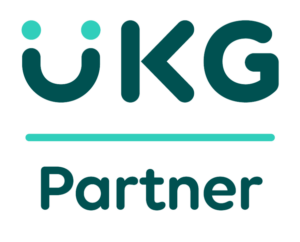Organizations today are becoming increasingly aware of the value of having a diverse workforce. Yet, many organizations still fail when it comes to recruiting a diverse talent pool. The solution? Data analytics.
Data analytics can help you understand where there are opportunities for improvement within your organization so that you can begin creating an inclusive culture that attracts talent from all backgrounds.
It can also help you understand how your organization stacks up against other companies in terms of diversity — from gender representation in leadership positions to race/ethnicity breakdown by department.
It is important for companies to understand which of the many different types of data they want access to before deciding on a solution or software package.
Some companies may want access to employee demographic information such as age, gender, and ethnicity, while others may be interested in employee tenure, performance ratings, or even employee compensation information like salary and bonus amounts paid out over time. This information paints a better picture of the employee experience and how you are executing on your culture objectives.
Here are 5 tips for using data analytics to improve your diversity, equality, and inclusion (DEI) analysis:
1. Get Your Data Together
Before you can use any kind of DEI analysis tool, you need to collect all of the relevant data from multiple sources — including employee surveys and demographic information — and compile it into a single database.
Take some time to consider how each metric impacts others within the organization — especially when it comes to key diversity and inclusion issues, representation and pay related information.
This will help you prioritize key areas where improvements can be made, allowing you to focus your efforts to facilitate change while giving you a holistic view of the organization.
You’ll also want to get all of your processes and systems in order so that they’re ready to handle the influx of information you’ll be collecting. Make sure that all employees have access to the right tools — such as training on how to conduct surveys — so they can implement these processes themselves.
2. Identify Your Goals and Objectives
Before you can begin using data to improve DEI in your organization, you need to define what success looks like. Having specific goals will help you know what metrics to track and monitor over time.
Make sure that any data collected is anonymous, when possible, so employees feel comfortable sharing their thoughts and feelings with management without fear of reprisal or embarrassment if something negative comes up in their responses (for example, if someone complains about a coworker).
Companies need a thorough understanding of how their employees work in order to design effective DEI analysis programs.
Identify barriers within your organization’s culture that prevent employees from participating in DEI analysis activities. Factors like lack of time or resources may be preventing employees from getting involved in initiatives that support their colleagues from underrepresented groups (URGs).
Look at your employee surveys for possible issues related to DEI. If there is an issue with respect to URGs within your organization’s culture, it will likely come up through employee surveys or other data collection methods.
3. Choose a Suitable Method for Your Business Needs
There are many types of DEI analysis tools available, each with its own advantages and disadvantages depending on your needs and preferences.
The following are some popular ones: descriptive statistics (which tells us about our data), inferential statistics (which tells us about our sample), statistical significance testing (which determines whether something is likely to be true), and regression analysis (which shows relationships between variables).
Make sure your team is ready for change and has the tools it needs to implement positive change — including management support and buy-in from employees who will be affected by any changes made based on the results of your analyses.
4. Identify a Specific Theory of Change
Once you have identified what specific questions are important for your organization, then it’s time to focus on creating a theory of change that describes how improvement happens and what needs to happen for each step of the process (e.g., change in behaviors).
Keep in mind that each theory needs its own approach when using data analysis.
5. Understand that Data Analytics Is Not Magic
Data analytics can be incredibly powerful, but it’s not magic. It’s just another tool in your toolbox that will help you make better decisions and take action on those decisions faster than ever before.
If someone tells you that they have a “magic” solution for your company’s problems or that they can solve all of your problems with technology alone, run away… as fast as possible!
Make sure you have all of the data you need before starting any analysis or reporting effort. It’s not uncommon for organizations with multiple locations or divisions within a single location to have slightly different salary structures (e.g., different levels of pay for certain roles or titles).
You should also include historical data in your analysis so that you can see patterns over time and identify areas where changes need to be made.
Need more?
Follow Decusoft to stay up to date on more tips, insights, articles, papers, webinars and more to help you and your business become even more successful!




